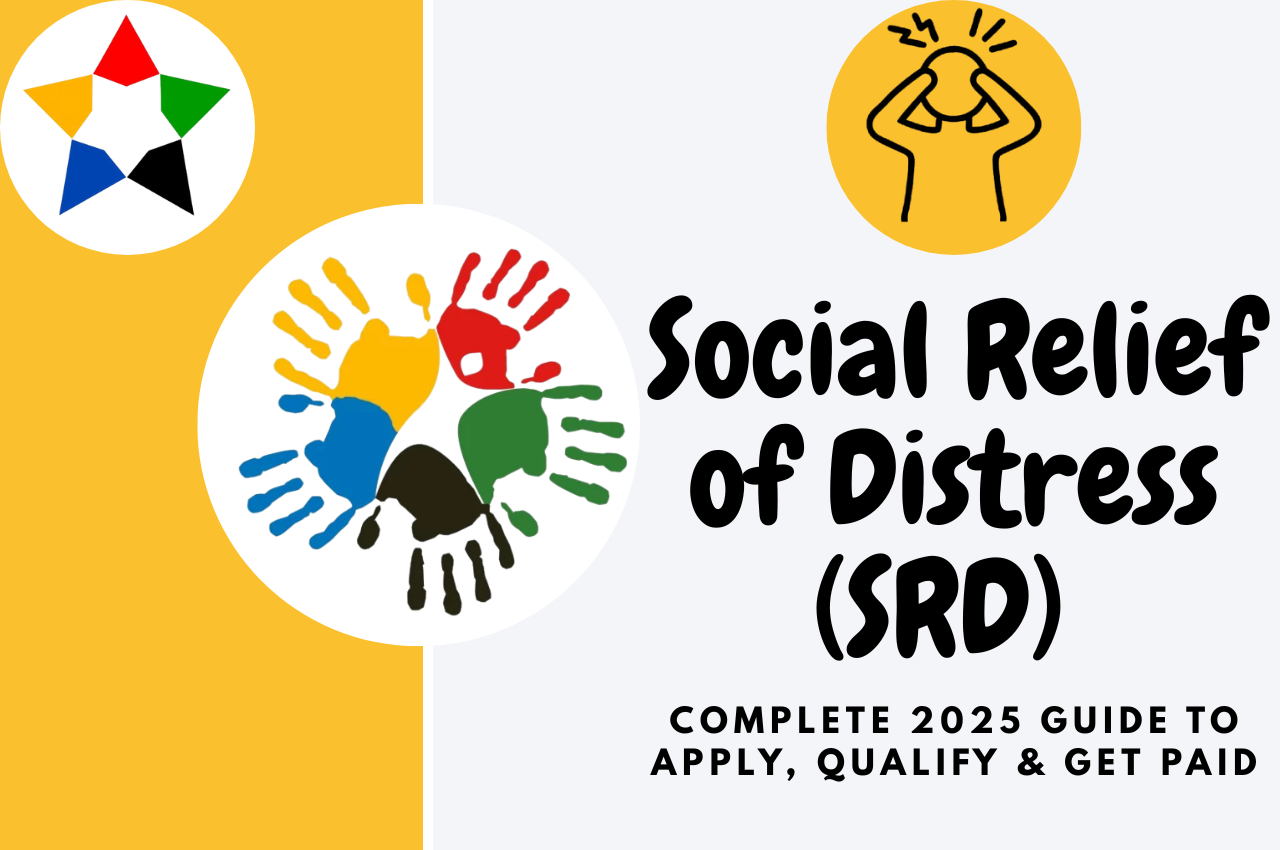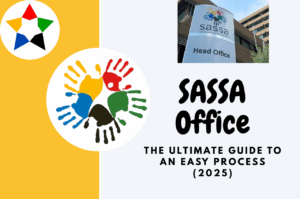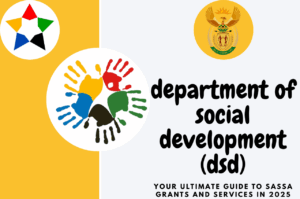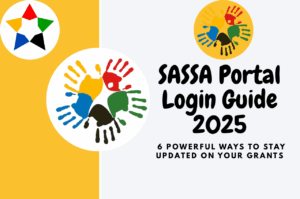If you’re struggling financially and need immediate support, understanding social relief of distress is essential. This government program provides temporary assistance to South Africans facing hardship due to unemployment, disasters, or other crises. In this guide, we’ll walk you through everything you need to know about qualifying, applying, and receiving support through social relief of distress in 2025.
What is Social Relief of Distress?
Social Relief of Distress is a temporary form of financial or material assistance provided by the South African government to individuals and families facing extreme hardship. Managed by the South African Social Security Agency (SASSA), this support is designed to help people who are unable to meet their basic needs due to crisis situations such as unemployment, disaster, or unexpected financial distress.
The social relief of distress program plays a critical role in bridging the gap for those who are not receiving any other form of income or social grant. It is most commonly known today for the SRD R370 grant, introduced as a response to widespread poverty and high unemployment rates.
There are different types of relief available under this program, including:
- Cash payments (like the SRD R370 monthly grant)
- Food parcels
- Vouchers for essentials
This assistance is not permanent and is typically offered for a short period—usually three months, with the possibility of a three-month extension in certain cases.
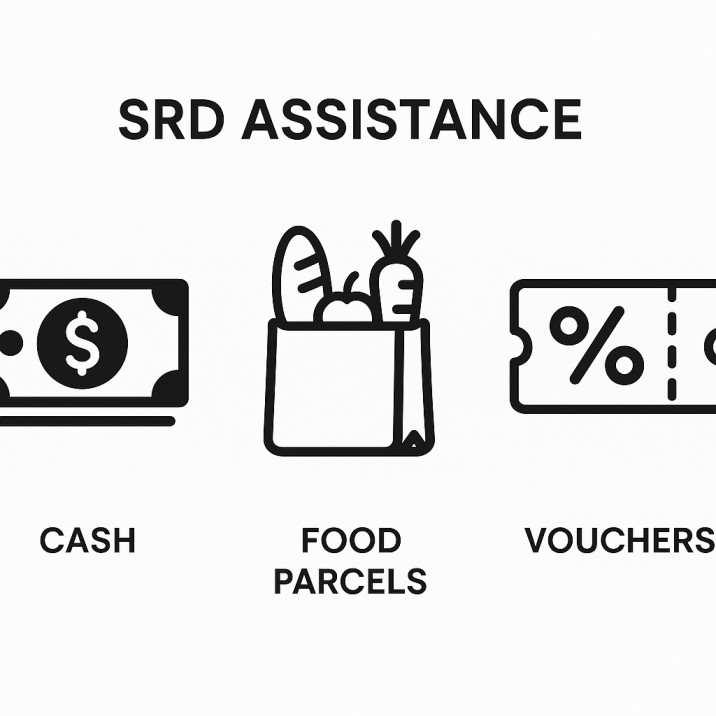
In summary, social relief of distress is a lifeline for South Africans experiencing sudden or severe hardship. It ensures that vulnerable individuals are not left without support while they seek longer-term solutions.
Who Qualifies for Social Relief of Distress?
To receive social relief of distress, you must meet certain eligibility requirements set by SASSA. This temporary assistance is only given to people who are in desperate need and have no other source of income or support. Below are the situations in which you may qualify.
You may qualify if you:
- Are unemployed and do not receive any form of income or social grant.
- Are waiting for your approved grant to start paying out.
- Are unable to work due to a medical condition or temporary disability.
- Are experiencing financial hardship because of a crisis (such as retrenchment, family breakdown, or domestic violence).
- Have been affected by a natural disaster and are not receiving help from other sources.
- Are caring for someone who is in distress but you are not being paid for it.
- Are a child-headed household with no adult support.
- Are unable to provide for yourself and your dependents, and no one else can help you.
Important Notes:
- You must be a South African citizen, permanent resident, or refugee with a valid permit.
- You must not be receiving any other form of assistance from the state during the period of application.
- This assistance is typically offered for up to three months, with a possible extension for another three months if your situation has not improved.
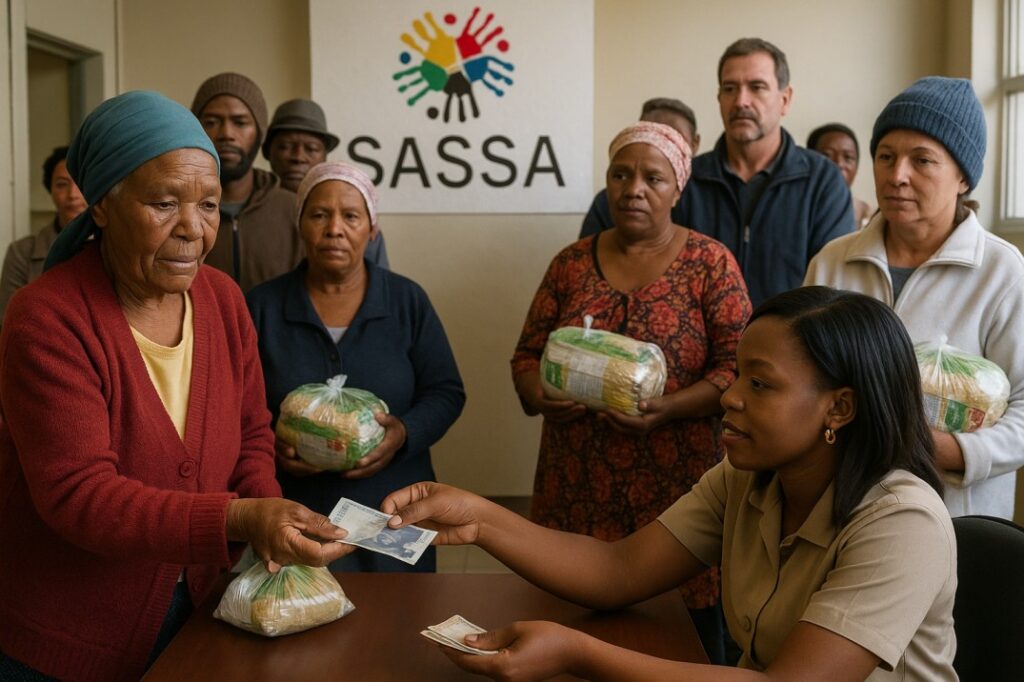
Types of Social Relief of Distress Available
The social relief of distress program in South Africa offers different forms of short-term assistance to help individuals and families cope with urgent financial needs. SASSA provides this relief in various ways, depending on the situation of the applicant and available resources.
Here are the main types of social relief of distress you may receive:
1. SRD R370 Grant (Cash Assistance)
This is the most well-known form of SRD, offering a monthly payment of R370 to eligible individuals. It is paid directly into the applicant’s bank account or through other approved payment channels.
- Ideal for those who are unemployed and have no source of income.
- Must be reapplied for after a fixed period, if the need continues.
2. Food Parcels
Food parcels are delivered to people who are in immediate need and cannot afford basic groceries. These parcels usually include:
- Maize meal
- Cooking oil
- Tinned foods
- Sugar and other basic staples
This form of assistance is more common in rural areas or for those without access to banking facilities.
3. Vouchers
In some cases, beneficiaries may receive vouchers instead of food parcels or cash. These vouchers can be used at selected retailers to buy essential groceries or hygiene products.
- Usually issued where food delivery is not practical or secure.
- Offers flexibility in choosing needed items.
4. Temporary Shelter or Emergency Support
In disaster situations, temporary shelter or clothing may be provided under the social relief of distress program. This applies to people affected by fires, floods, or other emergencies where homes or belongings are destroyed.
How to Apply for Social Relief of Distress in 2025
Applying for social relief of distress in 2025 is a simple process, but it’s important to follow the correct steps to avoid delays or rejections. Whether you’re applying for the SRD R370 grant, food parcels, or vouchers, the application must go through SASSA (South African Social Security Agency).
Step-by-Step: How to Apply
1. Choose Your Application Method
There are two main ways to apply for social relief of distress in 2025:
- Online Application (for the SRD R370 Grant):
Visit the official SASSA SRD website: https://srd.sassa.gov.za
Fill in your personal details, including:- South African ID number
- Cellphone number (for OTP verification)
- Banking details (if available)
- In-Person Application (for food parcels or if you cannot access the internet):
Go to your nearest SASSA local office with the required documents (listed below).
A SASSA officer will help you fill out the application form.
Documents You’ll Need
To apply, you will need the following:
- A valid South African ID or asylum/refugee permit
- Proof of residence (can be an affidavit if informal)
- Proof of income (or declaration of no income)
- Medical certificate (if applying due to illness or disability)
- Birth certificates of dependents (if applying on behalf of a household)
SASSA may verify your financial status through government databases to determine eligibility.
Tips for a Successful Application
- Ensure your ID and contact details are correct. Typos are a common reason for delays.
- Use a cellphone number registered in your name for faster OTP verification.
- Apply as soon as your financial situation changes—don’t wait.
- Avoid duplicate applications—SASSA will only consider one request per person.
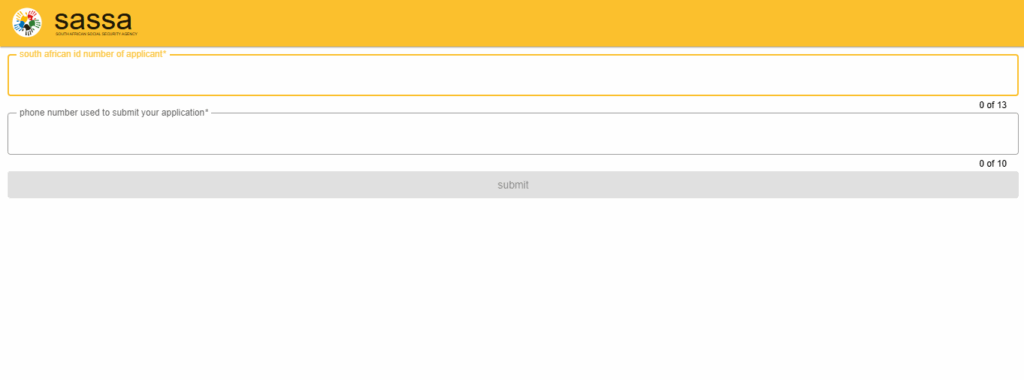
In 2025, the social relief of distress application process remains focused on accessibility and speed, especially through digital platforms. Make sure to prepare your documents and apply correctly to receive help as quickly as possible.
What Happens After You Apply?
After submitting your application for social relief of distress, SASSA will begin a review process to determine whether you qualify for assistance. It’s important to know what to expect so that you can stay informed and avoid unnecessary delays.
1. Application Review and Verification
SASSA checks the information you submitted against various government databases, such as:
- Home Affairs (to confirm your ID)
- UIF (Unemployment Insurance Fund)
- SARS (to check for any income)
- Bank accounts (to verify financial status)
This is done to ensure that you genuinely qualify for social relief of distress and are not already receiving support from another government source.
2. Notification of Outcome
Once your application is processed, you will be notified of the outcome by:
- SMS to your registered cellphone number
- Or through the official SASSA SRD website if you applied online
If approved, the message will confirm the type of relief you’ll receive—SRD R370 cash, food parcel, or voucher—and how it will be delivered.
3. If Your Application is Approved
You’ll begin receiving assistance based on what you qualified for:
- Cash payments are sent through your bank, CashSend, or post office
- Food parcels or vouchers may be delivered or collected from a SASSA distribution point
The support is usually provided for three months, and you may reapply or request an extension if your situation doesn’t improve.
4. If Your Application is Declined
If you don’t qualify, SASSA will tell you why your application was declined. Common reasons include:
- Existing income or social grant
- Incomplete or incorrect information
- Duplicate applications
You have the right to submit an appeal if you believe the decision was incorrect (covered in the appeals section).
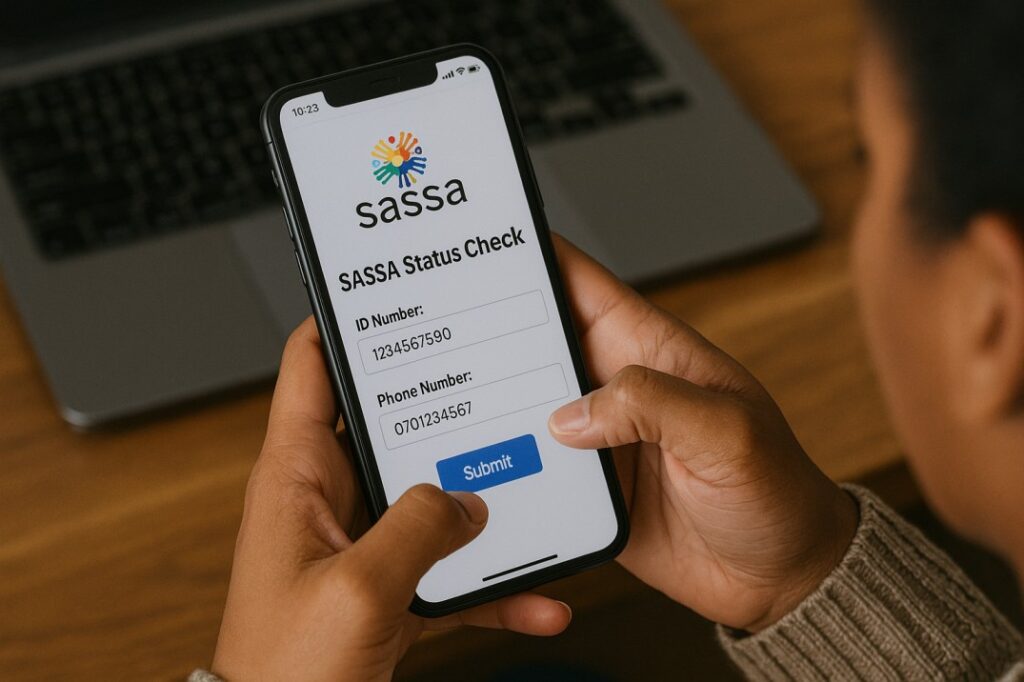
Understanding what happens after you apply for social relief of distress helps reduce confusion and gives you confidence as you wait for feedback. Be sure to monitor your messages regularly and keep your contact details up to date.
How Much is the Social Relief of Distress Grant in 2025?
As of 2025, the social relief of distress grant provides R370 per month to approved applicants. This amount is set by the South African government and administered through SASSA (South African Social Security Agency).
Key Details About the R370 Grant:
- Monthly Amount: R370
- Paid per eligible individual (not per household)
- Duration: Initially approved for 3 months, with the option to extend for another 3 months depending on your circumstances
- Payment Method: Paid directly into a bank account, through CashSend, or other approved payment channels
This financial support is intended to help cover basic necessities, such as food, electricity, transport, or hygiene items. It is not meant to replace a full income but to provide temporary relief during a time of crisis or financial hardship.
How Does the Amount Compare to Other Types of SRD?
Apart from the cash grant:
- Food parcels vary in value but typically contain groceries worth between R400 to R600, depending on availability.
- Vouchers may be issued with a fixed value (e.g., R500) and are redeemable at participating retailers.
The value of these support types may differ, but all fall under the umbrella of social relief of distress, depending on what the applicant qualifies for and the type of assistance offered in that region.
In summary, the social relief of distress grant provides R370 per month to support individuals in need. While modest, this assistance plays a vital role in helping many South Africans survive during times of financial hardship.
Payment Dates and Methods
Once your application for social relief of distress is approved, it’s important to understand when and how you’ll receive your funds or assistance. The SRD R370 grant is paid monthly, and the distribution is managed by SASSA through various channels.
1. Payment Dates
SASSA does not pay all beneficiaries on the same day. Instead, payments are made in staggered batches throughout the month to avoid system overload and reduce queues.
- SRD R370 Grant:
Payments are usually made between the 25th and 30th of each month, but this can change based on public holidays or system updates.
You can check your exact payment date online at https://srd.sassa.gov.za by entering your ID number and cellphone number. - Food Parcels & Vouchers:
These are distributed by local SASSA offices or partner organisations. You’ll be contacted directly by SMS or phone call when your collection or delivery is ready.
2. Payment Methods
There are several ways that beneficiaries receive their social relief of distress support:
a. Bank Account (Preferred)
- The safest and fastest method.
- Funds are transferred directly to your bank account.
- Make sure the account is registered in your name to avoid delays.
b. CashSend Services
- For applicants without bank accounts.
- You will receive an SMS with a voucher code that you can use to withdraw money at selected ATMs (such as Shoprite or Boxer stores).
- Must use the cellphone number linked to your application.
c. Post Office (limited availability)
- Some beneficiaries may still collect their grant from SAPO branches (South African Post Office), but this method is being phased out in many areas.
d. Food Parcel/Voucher Collection
- If you qualified for non-cash assistance, SASSA or a partnered NGO will coordinate delivery or pickup.
- You may need to present your ID and reference number.
Knowing your social relief of distress payment date and how you’ll receive the funds helps you plan ahead and avoid confusion. Always keep your contact details updated with SASSA to receive timely payment notifications.
Tips for First-Time Applicants
If you’re applying for social relief of distress for the first time, it’s important to be prepared. Many applications are delayed or declined simply because of missing information, incorrect details, or avoidable errors. Below are practical tips to help first-time applicants apply smoothly and confidently.
1. Make Sure You Qualify
Before applying, double-check that you meet the eligibility criteria for social relief of distress. You must:
- Be a South African citizen, permanent resident, or legal refugee
- Have no income or social grant
- Be experiencing serious financial hardship
Read through the qualifying conditions carefully to avoid wasting time on an ineligible application.
2. Use Accurate Personal Information
Your ID number, full name, and cellphone number must match exactly what is registered with the Department of Home Affairs.
- Avoid nicknames or spelling mistakes
- If your name or ID has changed, update your records first
3. Register a SIM Card in Your Name
SASSA uses your cellphone number to:
- Send you OTP (One-Time PIN) codes
- Confirm your application
- Notify you of approval or payment
Make sure your SIM card is RICA-registered in your name, or you may not receive important messages.
4. Choose the Right Payment Option
Whenever possible, provide your own bank account details. It’s the fastest and safest way to receive your SRD R370 grant.
If you don’t have a bank account, you can choose CashSend, but ensure the phone number used is active and correct.
5. Check Application Status Regularly
After applying, visit the official SRD website to check your status:
👉 https://srd.sassa.gov.za/sc19/status
Staying informed helps you act quickly if your application is rejected or delayed.
6. Avoid Duplicate Applications
Only apply once. Submitting multiple applications under the same ID can delay the process or lead to automatic rejection.
7. Save All Your Records
Keep a copy of your application reference number, confirmation SMS, and any emails or documents related to your application. You’ll need these if you want to appeal a decision later.
Applying for social relief of distress for the first time can feel overwhelming, but by following these tips, you increase your chances of being approved quickly and without issues. Preparation is key—know what’s required, and get it right the first time.
Frequently Asked Questions (FAQs)
1. Can I apply for social relief of distress if I already receive a social grant?
No. Social relief of distress is meant for people who are not receiving any form of income or government assistance. If you’re already receiving a grant like the Child Support Grant, Older Person’s Grant, or Disability Grant, you do not qualify.
2. How long does social relief of distress last?
The assistance is usually provided for three months, but in some cases, it may be extended by an additional three months if your financial situation has not improved.
3. Do I need to apply every month for the SRD R370 grant?
No. Once approved, the SRD R370 grant is paid automatically each month for the approved period. However, if your application is declined or your situation changes, you may need to reapply or update your information.
4. Can I update my banking or contact details after applying?
Yes. You can update your banking details or cellphone number by visiting the official SASSA SRD website: https://srd.sassa.gov.za. Make sure the new details are accurate and belong to you.
5. What should I do if my application is rejected?
If your application for social relief of distress is declined, you have the right to submit an appeal. Appeals must be submitted online via the SASSA SRD portal within 30 days of receiving the rejection notice. Be sure to check the reason for rejection before appealing.
6. Can non-citizens apply for social relief of distress?
Yes, but only if you are a refugee or asylum seeker with a valid permit. You must also meet all other eligibility criteria and provide supporting documentation.
7. Is there a way to check the status of my application?
Yes. You can check your SRD application status online at:
👉 https://srd.sassa.gov.za/sc19/status
Enter your South African ID number and the cellphone number used during the application.
8. Will I be taxed on the SRD R370 payment?
No. Social relief of distress payments are not taxable and do not need to be declared as income.
Conclusion
The social relief of distress program is a vital safety net for South Africans facing sudden financial hardship. Whether through the SRD R370 grant, food parcels, or vouchers, this temporary assistance helps individuals and families meet their basic needs during tough times.
If you qualify, applying for social relief of distress is straightforward, especially with the improved online application options available in 2025. Remember to provide accurate information, check your application status regularly, and don’t hesitate to appeal if your application is declined unfairly.
Getting the support you need can make a real difference in overcoming difficult situations. Take the first step today—check your eligibility and apply for social relief of distress to secure temporary relief and move toward a more stable future.

